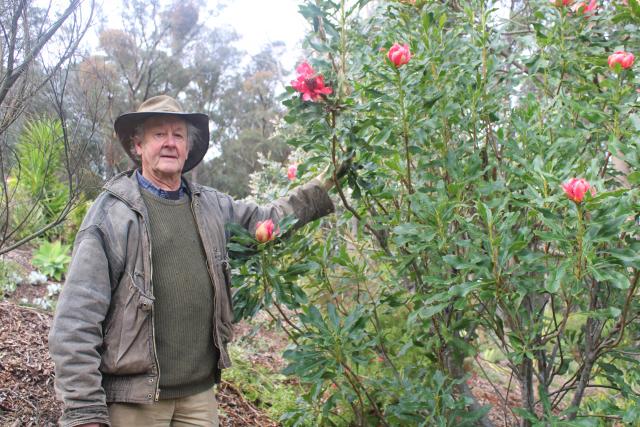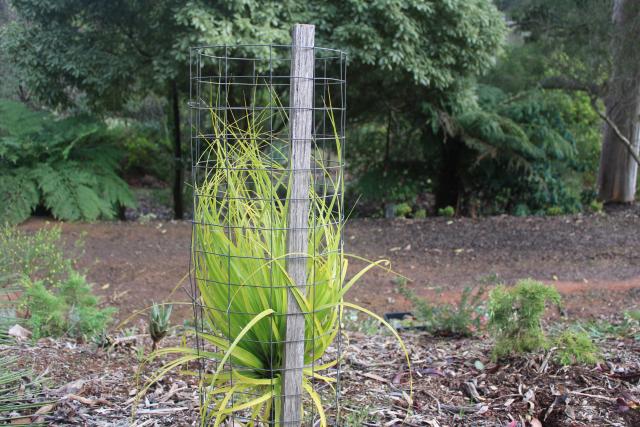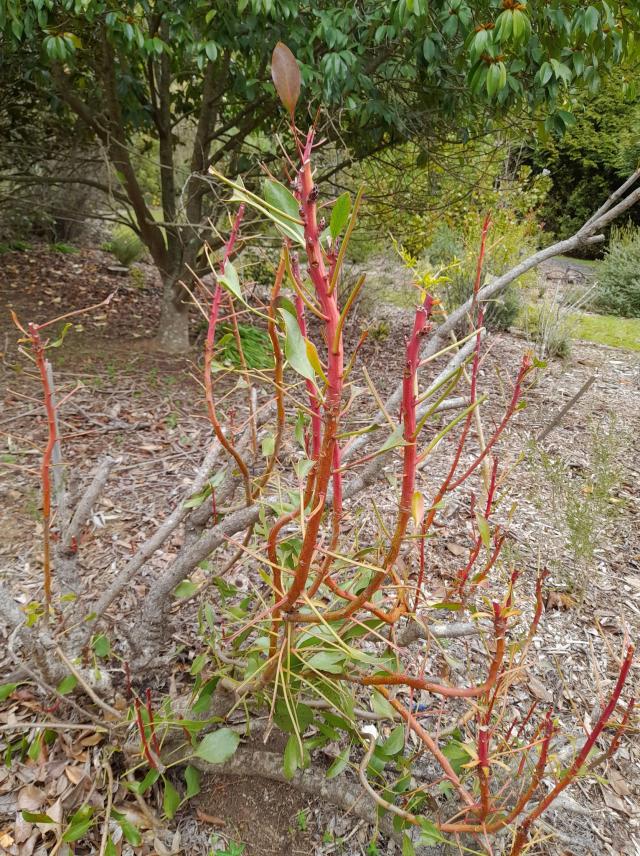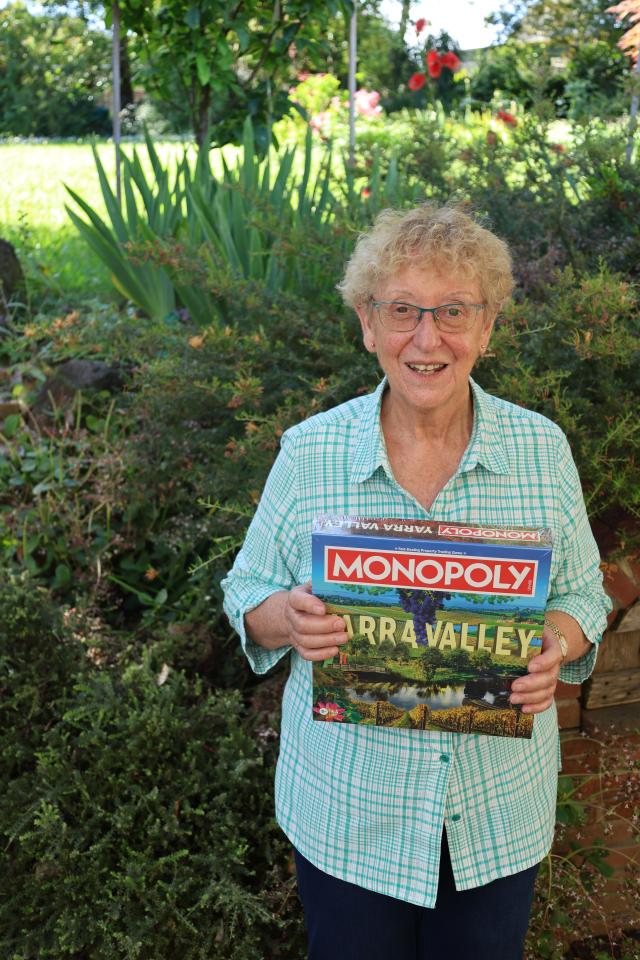In the last two years, it has proved difficult for David Hoskins as an increasing number of deer encroach on his 10-acre Emerald nursery Telopea Gardens, which he has been operating for 45 years.
“The deerare so much work, they cause total devastation,” Mr Hoskin said.
“What they can’t reach they tend to break branches off, I’ve got bushes [where] all that’s left are sticks.”
Mr Hoskin said Telopea Gardens has been able to open under the Victoria’s open garden scheme, and received a lot of local foot traffic throughout Victoria’s pandemic restrictions, but there are currently no plans to publicly open the garden with ruined shrubs and ringbarked trees throughout the property.
“The deer are getting worse and worse, there’s more and more damage not only to my property but to the natural forest out the back… they’re damaging all the native vegetation and also causing a lot of erosion,” Mr Hoskin said.
An aerial thermal helicopter survey conducted by the Cardinia Deer Management Coalition in July 2021 found an estimated 1653 deer in the 110km squared survey in areas including in Emerald, Menzies Creek, Cockatoo and South Belgrave.
The survey also found a total of 15 feral deer per kilometre throughout Cardinia Shire, which spanned to Upper Beaconsfield and parts of Officer.
Cardinia Deer Management Coalition member and Belgrave resident Johannes Wenzel said the results were “shocking”.
“I’m a medical doctor and having deer in a water catchment or water reservoir is absolute madness because deer have terrible diseases which they can spread and water contamination could cause huge problems for our population,” Mr Wenzel said.
“Over the last three years, it has increased dramatically and we had deer coming really not far from the Muddy Creek, which is a bushy area coming down from Menzies Creek, going to Belgrave South and the Cardinia Creek later,” Mr Wenzel said.
“Deer live in that Cardinia Creek territory, It’s very safe for them, nobody disturbs them, and they multiply quite happily, and every so often they visit our place and they come and destroy the fruit trees. They eat all the young shoots of the fruit trees, they nibble on our roses.”
Melbourne Water began a deer management program across major catchments including Cardinia in October 2021, with the most recent operation resulting in 67 deer removed from the catchment.
“The activities are being undertaken by accredited and authorised contractors to ensure the process is done in the most humane, safe and ethical way to eradicate deer from the fenced catchment and reduce numbers elsewhere,” Melbourne Water’s General Manager of Waterways and Catchment Operations Kirsten Shelly said.
“There are nine more operations planned. Depending on the results, we may extend the program for another two years,” Ms Shelly said.
“Our deer management program in Cardinia Reservoir is well on track to make a significant deer environmental impact reduction at the site – potentially eradicating deer from the catchment area altogether.”
Deer are currently protected on public land under the Wildlife Act as wildlife, meaning deer can only be killed under an Authority to Control Wildlife permit, but on private land are not protected, and if causing damage and can be killed.
In March 2022, the Victorian Government introduced the Peri-urban Deer Control Plan, identifying priority areas for deer control in a coordinated approach to reduce the threat deer pose to the environment, farming, public safety and Aboriginal cultural heritage, including in the Dandenong Ranges.
The Department of Environment, Land, Water and Planning (DELWP) is the managing authority for wildlife in Victoria, including deer on public land, and told the Star Mail while there has not been a formal survey in the Dandenong Ranges, and deer are being sighted in “higher numbers, moving into new areas and causing greater impact across the area”.
“Further control actions, informed by this plan, will build on the work undertaken to date by Parks Victoria to control deer in the Dandenong Ranges and continue to protect wildlife and their habitats in priority areas,” a Victorian Government spokesperson said.
Mr Wenzel said current legislation has allowed deer to “basically invade suburbia”.
“Shooting is unfortunately probably the only effective method at the moment, but then there are other things like fencing and diversion and distracting [with] overflights or sprinklers or something, but they’re not really that effective in the end,” Mr Wenzel said.
Mr Wenzel said a more cohesive approach, bringing all agencies and counts together, is needed to reduce deer population in the Dandenong Ranges, rather than localising certain areas.
“You should really count deer at the same time on one side of the fence and on the other side of the fence. Otherwise, it might become useless,” he said.
David Hoskin has begun putting cages around vegetation, but can’t see this as a viable solution in the long run.
“There’s a possibility of putting a big fence right around the property, but they cost a fortune,” Mr Hoskin said.
“When we open up the garden it’s usually for charitable events and things so it’s not a big money spinner here – you just get by with it.”
While agencies continue in their attempt to manage the deer population in the Dandenong Ranges, David Hoskin will weigh up whether it is worth continuing on.
“To put up big fences would stop even the wallabies and wombats and things from wandering through, which would be most unfortunate to be surrounded by fences when you’ve lived all this time without negligible fences,” he said.










